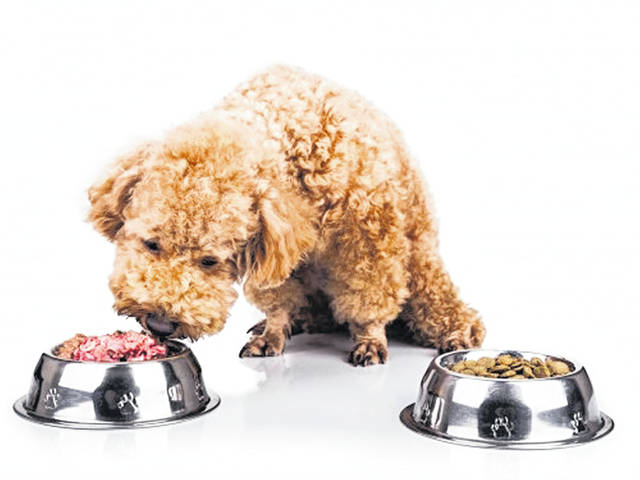
Question: Is raw pet food OK to serve to my dog?
Answer: While many pet owners may prefer to feed their furry family members raw pet food, the Centers for Disease Control and Prevention says that’s not such a good idea.
This is because pathogens like salmonella and listeria have been found in some raw pet foods, even in some of those brands that are sold pre-packaged in stores, CDC says. Since these germs can make your pet sick, it’s best not to feed them to your dog.
Studies from the U.S. Department of Food and Drug Administration have found that there are more harmful germs in raw pet food than any other type of pet food. And, if you handle these raw pet foods and don’t wash your hands afterward, they can make you and your family sick as well.
Such was the case in February when two children in Minnesota suffered salmonella infections and illnesses after coming into contact with bacteria from contaminated raw pet food that included raw ground turkey, according to the Minnesota Department of Health. The exposure to the salmonella caused septicemia, a blood infection, in one child and osteomyelitis, a painful and serious bone infection, in the other child, according to a report from the U.S. Food and Drug Administration.
Dry dog food can also pose a risk in some instances, CDC says. In fact, CDC says that it is possible for dry and canned pet foods to become contaminated with salmonella pathogens in certain circumstances, noting that salmonella infections have been reported that were linked to dry dog food.
However, CDC says there are ways to lessen your chance of illness when handling dog food, including:
Wash your hands right after handling pet food or treats.
Store pet food and treats away from where human food is stored or prepared and away from reach of young children.
Store dry pet food in its original bag inside a clean, dedicated plastic container with a lid, or keep the top of the bag folded or closed.
Do not use your pet’s feeding bowl to scoop food — use a dedicated scoop, spoon or cup.
Keep dry pet food and treats stored in a cool dry place.
Promptly discard, refrigerate or store any leftover food.
If you choose to feed your doggie raw pet food (which CDC doesn’t recommend), CDC says you should:
Clean and disinfect all surfaces that the raw food touched, like countertops, microwaves, refrigerators and objects like knives, forks, and bowls.
Keep raw pet food away from other food in your refrigerator or freezer.
Freeze raw pet food until you are ready to use it.
Do not thaw frozen raw pet foods on a countertop or in a sink.
Throw away any food your pet does not eat.
And lastly, when you play with your doggie after he or she eats:
Don’t let your pet lick around your mouth and face
Wash your hands, and any other parts of your body they licked, with soap and water.
Don’t let your pet lick any of your open wounds or areas with broken skin.


